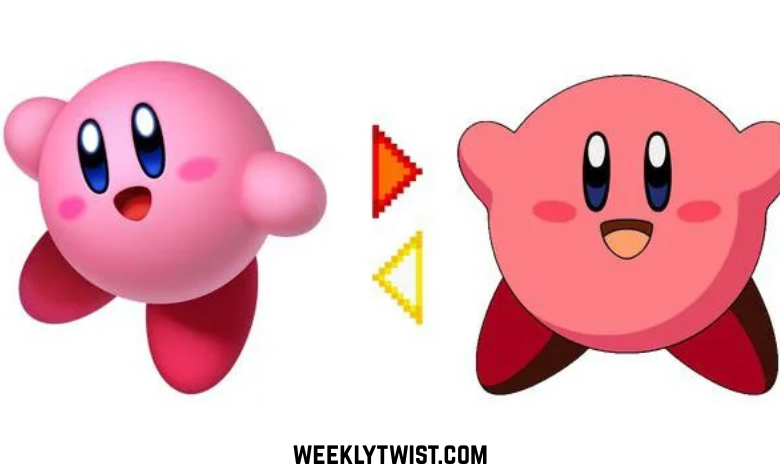The gaming world is a vibrant space, constantly evolving through new releases, characters, and an ever-expanding universe of fan-driven content. One of the most endearing and widely recognized characters in the video game industry is Kirby, the small, round, pink hero created by HAL Laboratory in 1992. His simple yet captivating design, coupled with his unique abilities, has made Kirby a beloved character in Nintendo’s roster. But beyond the official games, Kirby has also become a part of online meme culture, leading to the creation of the amusing phrase “Kirby Dedo”. This seemingly playful term adds a layer of humor and creativity, tapping into the character’s design quirks and the nature of meme-making itself. Let’s dive deeper into the meaning behind this term and how it ties into Kirby’s cultural legacy.
Who Is Kirby?
Before we delve into the specifics of the “Kirby Dedo” meme, let’s quickly revisit the character’s origins. Kirby was introduced to the world in the 1992 video game Kirby’s Dream Land for the Game Boy. Designed by Masahiro Sakurai, Kirby’s primary ability is his power to inhale objects and enemies, copying their abilities to adapt and overcome obstacles. This unique mechanic, combined with his charming round form and simplicity, made Kirby stand out in the crowded world of platformers.
Kirby’s design has always been incredibly minimalist—just a simple, round pink body with big, expressive eyes. His small, stubby hands, which appear more like round stubs than actual fingers, became a quirky detail that fans started to notice and affectionately joke about. This small design flaw (or feature, depending on how you look at it) would later become the focal point of a meme phenomenon known as “Kirby Dedo.”
What Is “Kirby Dedo”?
To understand the term “Kirby Dedo,” we must first explore the meaning of “dedo.” In Spanish, the word “dedo” translates to “finger.” So, when combined with Kirby, the term “Kirby Dedo” can be humorously understood as “Kirby Finger.” While this might sound like a playful or comical term at first, it reflects something deeper within Kirby’s design and the way fans interact with the character.
For those familiar with Kirby’s design, it’s easy to see how his hands—often round and lacking defined fingers—became a topic of discussion among fans. The character’s hands, especially given how integral they are to his power-absorbing ability, have always appeared somewhat rudimentary. They’re not the intricate, dexterous hands we might expect from other video game characters, and this simplicity is part of the charm.
The Birth of the Meme
“Kirby Dedo” seems to have first emerged in Spanish-speaking online communities, where meme culture thrives on creative reinterpretations of familiar concepts. The meme took off because of the humorous contrast between Kirby’s iconic, fingerless hands and the actions he performs in his games—many of which require a level of dexterity and interaction. This contrast led to fans creating exaggerated scenarios in which Kirby uses his hands in absurd or exaggerated ways, often emphasizing his lack of fingers in the process.
Imagine Kirby trying to hold or point at something in an exaggerated, comical manner—his stubby hands seem unable to properly execute the action, yet he carries on with his usual charm. It’s this quirkiness that made “Kirby Dedo” a fitting term for a meme. By adding “dedo” (finger) to his design, fans have playfully highlighted Kirby’s fingerless design and turned it into a point of humor. It’s an extension of the type of absurdity that meme culture celebrates: taking something as simple as a character’s design and turning it into a playful joke.
The Meaning Behind the Term “Kirby Dedo”
At first glance, “Kirby Dedo” might appear to be a simple, tongue-in-cheek meme. However, its meaning runs deeper when we consider how memes work. Memes are born out of relatability, often highlighting small or insignificant details in a character’s design that are then exaggerated to comedic effect. With Kirby, his lack of fingers is a small detail, but it has become a source of widespread amusement.
By adding the word “dedo,” which signifies the idea of fingers, fans exaggerate the concept of what Kirby can do with his hands. They create scenarios where Kirby’s interactions with the world are humorously challenged by his inability to use proper fingers. Fans might depict Kirby trying to do something as simple as pointing, but because of his “dedo-less” hands, it leads to a funny, exaggerated result. This creates a visual joke that resonates with many fans.
The Spread of “Kirby Dedo” Beyond Spanish-Speaking Communities
While “Kirby Dedo” originated in Spanish-speaking communities, it quickly spread beyond language barriers, as is often the case with viral memes. Online communities across different cultures embraced the humor behind the term, adapting it to their own interpretations of the character. The meme became a symbol of Kirby’s whimsical nature—his adorable design, the simplicity of his abilities, and, of course, his stubby hands. As memes often do, the term caught on because it tapped into a universal aspect of Kirby’s design that everyone could understand and laugh at.
As the meme spread, it took on various forms. Fans began creating exaggerated artwork, gifs, and even short animations that showcased Kirby’s “dedos” in hilarious situations. Some would even depict Kirby performing human-like actions that would normally require fingers—like typing on a keyboard or holding an object—only to hilariously fail due to his stubby appendages. This added layer of creativity made “Kirby Dedo” even more fun, as it allowed fans to interact with the character in a way that the games never intended.
The Role of Humor and Exaggeration in Meme Culture
Meme culture thrives on humor, absurdity, and exaggeration. It’s about taking something that may seem innocuous or small—like Kirby’s hands—and transforming it into a source of endless creative possibilities. With Kirby, fans took his fingerless design and added layers of humor, turning it into a joke that fans from all corners of the internet could understand. The beauty of this is that the meme exists because of the fanbase’s ability to take something from the game and, through exaggeration, create something entirely new.
The simplicity of the “Kirby Dedo” meme highlights the very nature of meme culture: a space where creativity and humor intersect. It also reflects the way that fans take ownership of beloved characters, reshaping them to fit new, sometimes absurd contexts. While the official games may not focus on Kirby’s hands, fans have elevated this small, quirky aspect into something iconic.
Why “Kirby Dedo” Still Resonates
In meme culture, longevity often depends on how relatable or simple the meme is. “Kirby Dedo” continues to resonate because it highlights a simple design flaw, turns it into a humorous concept, and allows fans to playfully engage with it. It also taps into Kirby’s larger-than-life personality—his ability to save the day despite his small size, simple design, and, yes, lack of fingers.
The meme is enduring because it doesn’t require an understanding of complex in-game mechanics or deep lore. All you need to know is Kirby’s stubby hands, and from there, the meme practically writes itself. Fans can easily latch onto the simplicity of the joke, making it a staple in the larger Kirby fandom and meme culture at large.
Conclusion
The term “Kirby Dedo” is a perfect example of how meme culture can transform something as simple as a character’s design into a global, humorous phenomenon. By attaching the word “dedo” (finger) to Kirby’s stubby, round hands, fans have created a meme that’s both endearing and funny. The term taps into the heart of what makes Kirby so beloved—his simplicity, creativity, and ability to adapt. And while “Kirby Dedo” may have started in Spanish-speaking communities, it has since become a universal meme that resonates with fans all over the world.
In the end, “Kirby Dedo” is a playful tribute to the character’s quirky design, a perfect example of how meme culture can take something simple and turn it into something enduring.

